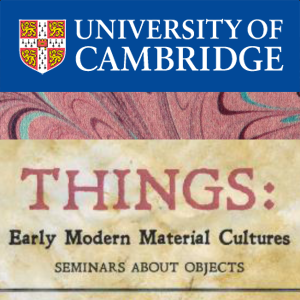Things - 12 March 2014 - Reading Things
Duration: 41 mins 13 secs
Share this media item:
Embed this media item:
Embed this media item:
About this item

| Description: |
Professor Jim Secord (Department of History and Philosophy of Science, Cambridge)
Reading science in a utopian world of print Dr Kristina Lundblad (Division of Book History, University of Lund, Sweden) Bound to be modern. Cloth bindings and literature as thing Abstracts Prof Jim Secord. For a brief, utopian moment in the late 1820s and early 1830s, the reading of science appeared to offer a remedy for Britain's social, political and religious malaise. Conversation about science pervaded elite society, new institutions for practising and disseminating knowledge were founded, and hundreds of thousands of men and women paid a penny a week to gain access to chemistry, geology, astronomy and other sciences. Even the most esoteric aspects of advanced calculus would, it was believed, become accessible to all. These millennial hopes were based on a perception that the physical quality, price and availability of printed word was being transformed by machine production. Changes in the material form of the book opened up the possibility of reshaping everyday life on a rational basis across the social spectrum. Dr Kristina Lundblad. With industrialization in the 19th century, book culture went through a number of changes. Like many other goods, literature began to be sold in retail packages – readymade bookbindings that conveyed the character of the literary content of the book. Objects such as packages and bookbindings took on an increasingly important place in the public and private spaces of modern society, spreading new imagery and symbolic messages. The use and handling of books and packages coincided with a use and handling of trade marks and logotypes and of a new world of images which introduced a number of new elements in everyday life. In this paper I will concentrate on the emergence of publishers’ bookbindings, and especially decorated cloth bindings: Why did publishers take on the commissioning of bindings, what kind of interaction between technology, economics and aesthetics took place on the book market, how can we understand the changes in binding design and how did modern, decorated bookbindings influence peoples relations to books and literature? |
|---|
| Created: | 2014-03-13 11:18 |
|---|---|
| Collection: | Things Seminar |
| Publisher: | University of Cambridge |
| Copyright: | Glenn Jobson |
| Language: | eng (English) |
| Keywords: | CRASSH; Things; |
| Abstract: | Professor Jim Secord (Department of History and Philosophy of Science, Cambridge)
Reading science in a utopian world of print Dr Kristina Lundblad (Division of Book History, University of Lund, Sweden) Bound to be modern. Cloth bindings and literature as thing Abstracts Prof Jim Secord. For a brief, utopian moment in the late 1820s and early 1830s, the reading of science appeared to offer a remedy for Britain's social, political and religious malaise. Conversation about science pervaded elite society, new institutions for practising and disseminating knowledge were founded, and hundreds of thousands of men and women paid a penny a week to gain access to chemistry, geology, astronomy and other sciences. Even the most esoteric aspects of advanced calculus would, it was believed, become accessible to all. These millennial hopes were based on a perception that the physical quality, price and availability of printed word was being transformed by machine production. Changes in the material form of the book opened up the possibility of reshaping everyday life on a rational basis across the social spectrum. Dr Kristina Lundblad. With industrialization in the 19th century, book culture went through a number of changes. Like many other goods, literature began to be sold in retail packages – readymade bookbindings that conveyed the character of the literary content of the book. Objects such as packages and bookbindings took on an increasingly important place in the public and private spaces of modern society, spreading new imagery and symbolic messages. The use and handling of books and packages coincided with a use and handling of trade marks and logotypes and of a new world of images which introduced a number of new elements in everyday life. In this paper I will concentrate on the emergence of publishers’ bookbindings, and especially decorated cloth bindings: Why did publishers take on the commissioning of bindings, what kind of interaction between technology, economics and aesthetics took place on the book market, how can we understand the changes in binding design and how did modern, decorated bookbindings influence peoples relations to books and literature? |
|---|---|

